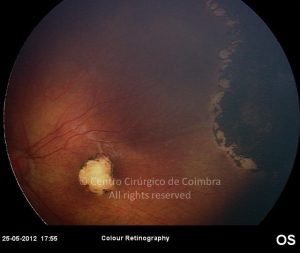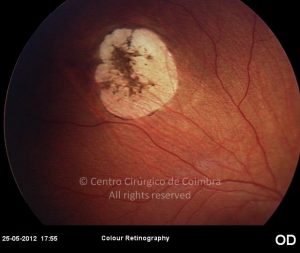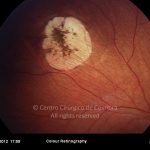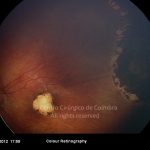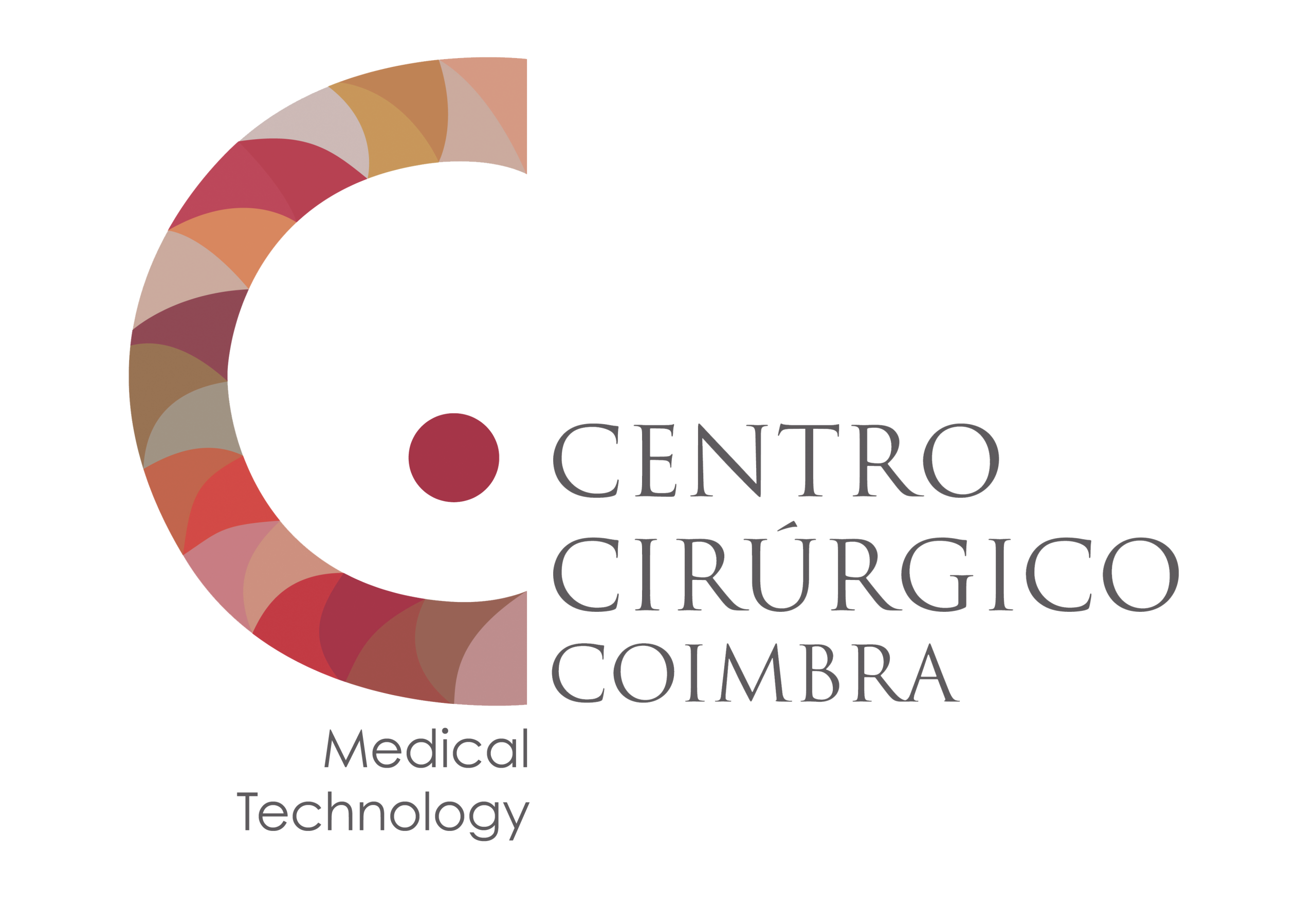Leber congenital amaurosis (LCA) is a retinal dystrophy and/or dysplasia of prenatal onset (autosomal recessive in the large majority). LCA is genetically heterogeneous, and, to date, mutations have been identified in six different genes known to be associated with LCA: AIPL1, CRB1, CRX, GUCY2D, RPE65 and RPGRIP1. LCA is associated with mental retardation, skeletal and muscular abnormalities, deafness, and seizures.
Ocular symptoms include severe visual impairment, sluggish pupils, nyctalopia, light sensitivity (50%), and nystagmus. It also associated with high hyperopia, keratoconus, and posterior subcapsular cataracts. Fundus examination, in the first month of life is frequently normal, but later, occur progressive retinal pigment epithelial granularity, vascular attenuation,
macular “colobomas”, yellow flecks, “salt-and-pepper”fundus, chorioretinal atrophy, or a retinitis pigmentosa appearance. Approximately 10% of cases will have a coloboma-like lesion. Electroretinography shows either no or very reduced retinal function.
In some experimental studies with gene therapy, encouraging results have been obtained.





